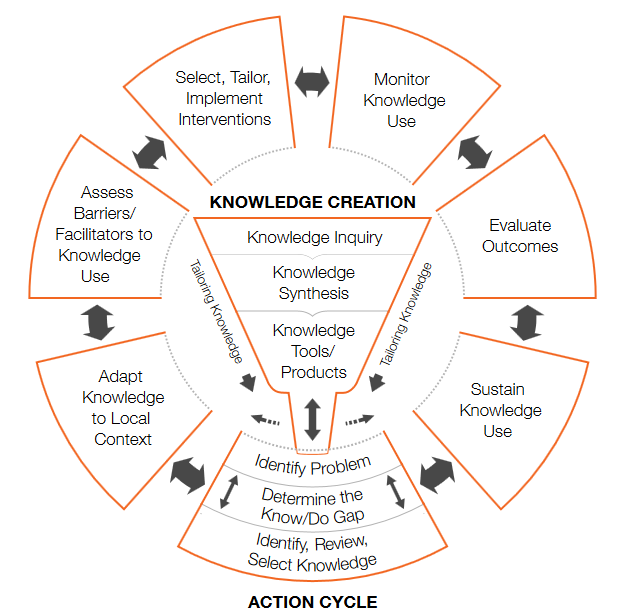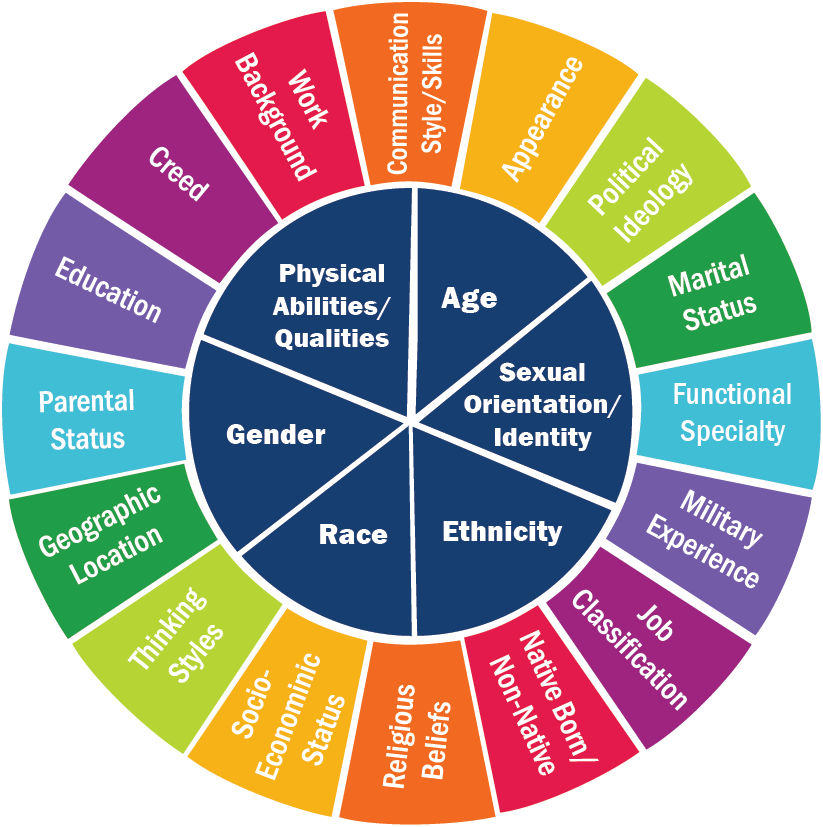The evidence to practice gap is the gap between research evidence being produced to being used in practice. Research has shown that this time gap can be more than 17 years!1, 2 This often means that patients are not receiving care in line with the best available scientific evidence.
Using knowledge translation methods can significantly reduce this time gap. Knowledge translation methods can ensure the research produced is aligned with user needs, thereby facilitating its rapid implementation and sustainability.
The Knowledge to Action (KTA) model can be used to guide users through this process of moving from evidence to implementation. The model consists of the Knowledge Creation Funnel which helps users identify what evidence to put into practice and the Action Cycle which supports users to:
- determine current practice compared to the evidence-based recommendations,
- ensure the evidence is feasible and acceptable within the implementation context,
- identify challenges and supports for using the evidence,
- choose appropriate strategies to support evidence implementation,
- iteratively assess how well the evidence and strategies were implemented,
- support sustained use of the evidence into routine practice.
The KTA model was created by Canadian researchers, including KTP’s Dr. Sharon Straus. It encompasses the entire continuum of KT activities and is endorsed by the Canadian Institutes for Health Research (CIHR) and the World Health Organization (WHO), among other national and international organizations. To learn more about the KTA model and how to apply it in practice, check out our Foundations of KT and Practicing KT courses.

Graham ID, Logan J, Harrison MB, Straus SE, Tetroe J, Caswell W, Robinson N. Lost in knowledge translation: time for a map?. Journal of continuing education in the health professions. 2006 Jan 1;26(1):13-24.
1. Balas E, Boren S. Managing Clinical Knowledge for Health Care Improvement.
In: van Bemmel JH, McCray AT, eds. Yearbook of Medical Informatics. Stuttgart: Schattauer Verlagsgesellschaft mbH, 2000:65–70.
2. “Why are Implementation Teams Important?” http://implementation.fpg.unc.edu/book/export/html/19
We apply an intersectionality lens at all stages of the Knowledge to Action framework to foster a comprehensive and nuanced approach to promoting inclusivity and addressing inequities. To learn more about intersectionality and our work, visit our Impact page.

Hankivsky O, Grace D, Hunting G, Giesbrecht M, Fridkin A, Rudrum S, Ferlatte O, Clark N. An intersectionality-based policy analysis framework: critical reflections on a methodology for advancing equity. International journal for equity in health. 2014 Dec;13:1-6.